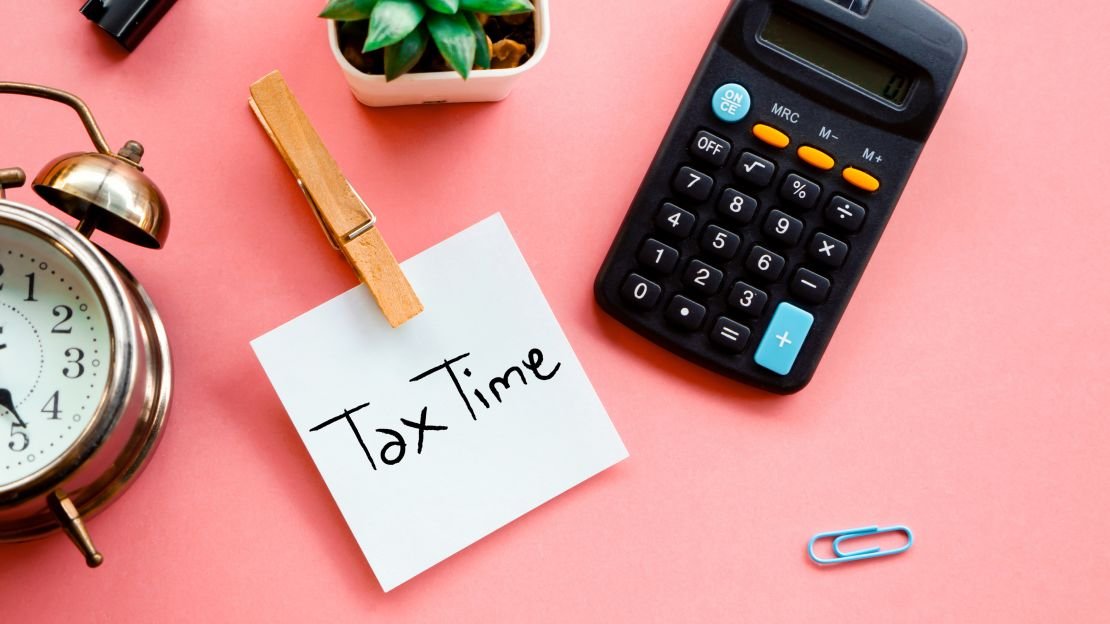CNN Underscored reviews financial products based on their overall value. We may receive a commission through our affiliate partners if you apply and are approved for a product, but our reporting is always independent and objective.
If you’re wondering how to file taxes for the 2022 tax year before it’s too late, you’ll be glad to know that you still have some time. The tax deadline falls on April 18 this year, and if you file an extension, you’ll have until Oct. 16, 2023, to submit your 2022 tax return. Most states also require filing an income tax return with similar deadlines.
But regardless of how long you have until tax day rears its ugly head, it’s crucial to get a handle on the process and the steps you need to take. Let’s go over the details of exactly how to do your taxes, tax preparation methods to consider and what to do if you don’t have the money to pay your taxes by the deadline.
The Internal Revenue Service (IRS) officially opened the door to taxpayers who wanted to file their 2022 returns on Jan. 23, 2023. This means that individuals and families could have filed their taxes any time since then, although it’s often smarter to wait until all the required documentation is in hand before getting started.
Speaking of that, the IRS encouraged everyone to have everything they need before filing their taxes this year. “Filing an accurate tax return can help taxpayers avoid delays or later IRS notices,” the agency wrote. Ensuring your return is accurate before you file can save you time and makes it less likely that you’ll need to file an amended return.
For the vast majority of Americans, the deadline to file either a 2022 personal federal tax return or a request for an extension is Tuesday, April 18, 2023. While the tax filing deadline normally falls on April 15, the deadline was moved to April 18 this year due to the Emancipation Day holiday in the District of Columbia.
Either way, note that this deadline is not just for filing — it’s the date that all taxes owed must be paid as well. This is true even if you’re requesting an extension to file your actual tax return. In fact, the IRS is very clear that taxpayers must pay their estimated bill in full in order to avoid potential interest and penalties. So if you don’t have the cash, you’ll either need to use a credit card to pay your taxes or request a payment plan from the IRS. More on these options below.
There are numerous strategies you can use to file your tax return if you haven’t yet, and some of them come with assistance if you need it. For starters, individuals can turn to tax software for help, which can expedite the process considerably. Some of the best tax software programs even let consumers file basic returns for free.
As an example, TurboTax lets you file on your own or with assistance from a professional, with costs that range from $0 for self-guided, basic filing to $389 for full-service tax filing assistance. You can also choose a mid-tier tax assistance plan that helps you move through the process of filing your tax return on your own with the help of a live assistance via online chat.
H&R Block offers similar plans, with the option to self-file or get help filing your taxes online. The company’s free version, called H&R Block Free Online, also lets you file basic tax returns at no cost, but you can pay more for more complex returns or help from a tax pro.
Other ways to file your taxes include:
- IRS Free File is a public-private partnership between the IRS and various tax software companies that lets taxpayers file for free online. Two different versions are offered: Guided Tax Preparation for those with an adjusted gross income (AGI) of $73,000 or less, and Free File Fillable Forms for those in a higher tax bracket with an AGI of more than $73,000.
- Volunteer Income Tax Assistance and Tax Counseling for the Elderly, an IRS program, offers free basic tax return preparation for those who qualify.
- Form 1040, U.S. Individual Income Tax Return from the IRS makes it possible to file a tax return the old-fashioned way: through the mail. This filing method can work whether you have a basic return or a more complex one that includes reporting items such as capital gains and investment income.
Note that these tax filing methods are geared to individuals or families filing a basic tax return. However, the IRS offers more filing information for businesses and self-employed people, international taxpayers and charities and nonprofits on its website.

While the method you choose to file your taxes can vary based on your income and how complicated your return is, here are seven steps that anyone can follow.
Step 1: Gather your paperwork. Before you prepare to file your taxes, you should gather all the paperwork you’ll need. This can include a W-2 form from your employer, earning and interest statements from investments (1099 and 1099-INT forms) and receipts for charitable donations and other write-offs if you plan to itemize.
Step 2: Decide how to file. While you can file a tax return through the mail, the IRS suggests filing online for faster processing and speedier refunds. You can also utilize a professional to help, take advantage of tax software or file using the time-honored paper and pen.
Step 3: Select the appropriate filing status. Your filing status will be based on whether you’re single, married or head of your household, along with other less common tax situations. You’ll also want to claim any dependents — which is typically a qualifying child or relative — as part of your return.
Step 4: Determine whether you are itemizing or taking the standard deduction. Most taxpayers with basic returns can use the standard deduction for 2022, which is $25,900 for married couples filing jointly and $12,950 for single taxpayers and married individuals filing separately.
Step 5: If you owe, decide how to pay. If you’re not receiving a tax refund and you wind up owing money to the IRS for the 2022 tax year, you need to make a tax payment or apply for a payment plan. Also note that it’s possible to pay taxes with a credit card in many cases.
Step 6: Choose how you want your refund. If you’re owed money from the IRS this year, you’ll need to specify how you want it sent to you. Options include direct deposit into a bank account, a prepaid debit card or a mobile app with direct deposit.
Step 7: Finish the process by tax day. Submit your tax return by the tax deadline for your state to avoid potential penalties and interest.
There are many different tax credits that can come into play when you file your taxes, including the advance Child Tax Credit payments. Another example is the Earned Income Tax Credit (EITC), which is available to eligible low-income taxpayers. These tax credits and others can help you pay less in federal or state taxes throughout the year if you qualify.
Generally speaking, you’ll learn which tax credits you may be eligible for as you move through the steps to file your taxes online. This is especially true if you use tax software, since these programs ask you specific questions that ensure you receive every tax credit you’re eligible for.
For example, TurboTax searches for tax deductions and credits as you file with the goal of helping you boost your refund. This type of help can be essential if you’re in a situation where you aren’t sure which tax credits apply, such as having student loans or being in a low tax bracket.
If your goal is getting your tax refund as quickly as possible, you should know that the IRS recommends filing electronically and choosing direct deposit as your method of payment. The agency also notes that most taxpayers will receive their refund within 21 days of their electronic filing date, provided no issues are detected.
Some returns may require manual review, however, in which case processing can take longer. The IRS also reports that, in cases where problems are detected but they can be resolved without corresponding, taxpayers will receive an explanation in the mail of changes that were made by the agency.

If you’re not ready to file your taxes and you’re running out of time, the IRS has a formal process for requesting an extension. However, the extension only gives you more time to file your tax return — any taxes you owe are still due by April 18, 2023.
To qualify for an extension, taxpayers must take one of the following steps:
If you don’t file your return or an extension request by the deadline, the failure to file penalty is 5% of the unpaid taxes for each month or part of a month that a tax return is late, up to a maximum of 25% of your unpaid taxes. And if you owe money and don’t pay by the deadline, the failure to pay penalty is 0.5% of your unpaid taxes for each month or part of a month that you’re late, up to a maximum of 25% of what you owe. In either case, interest will be charged on the outstanding amount as well.
Notice that the monthly penalty for not filing is much higher than the penalty for not paying? That’s why it’s vital to get your return filed or request an extension by the deadline, even if you don’t have the money to pay what you owe.
However, that doesn’t mean you should ignore the bill. Taxpayers who cannot pay the tax they owe by April 18 should set up a payment plan with the IRS as soon as possible. There are two different ways to apply for a payment plan:
Note that taxes paid on a payment plan will accrue interest based on how much is owed and how long it takes to be paid in full. Interest rates are adjusted every three months and can vary based on your tax filing status. That’s why it can sometimes make sense to pay taxes with a credit card if you can qualify for a credit card with a 0% introductory interest rate on purchases.
In any case, it’s important to make sure you take care of your taxes one way or another by the deadline. Ignoring them won’t make them go away, and will eventually lead to larger problems down the line. So if you can’t file or can’t pay on time, make sure to reach out to the IRS by April 18 to request an extension and/or payment plan, and keep your taxes from turning into a bigger burden.
Need a way to pay your taxes without interest? Find out which cards CNN Underscored chose as our best 0% interest credit cards available right now.
Get all the latest personal finance deals, news and advice at CNN Underscored Money.



















